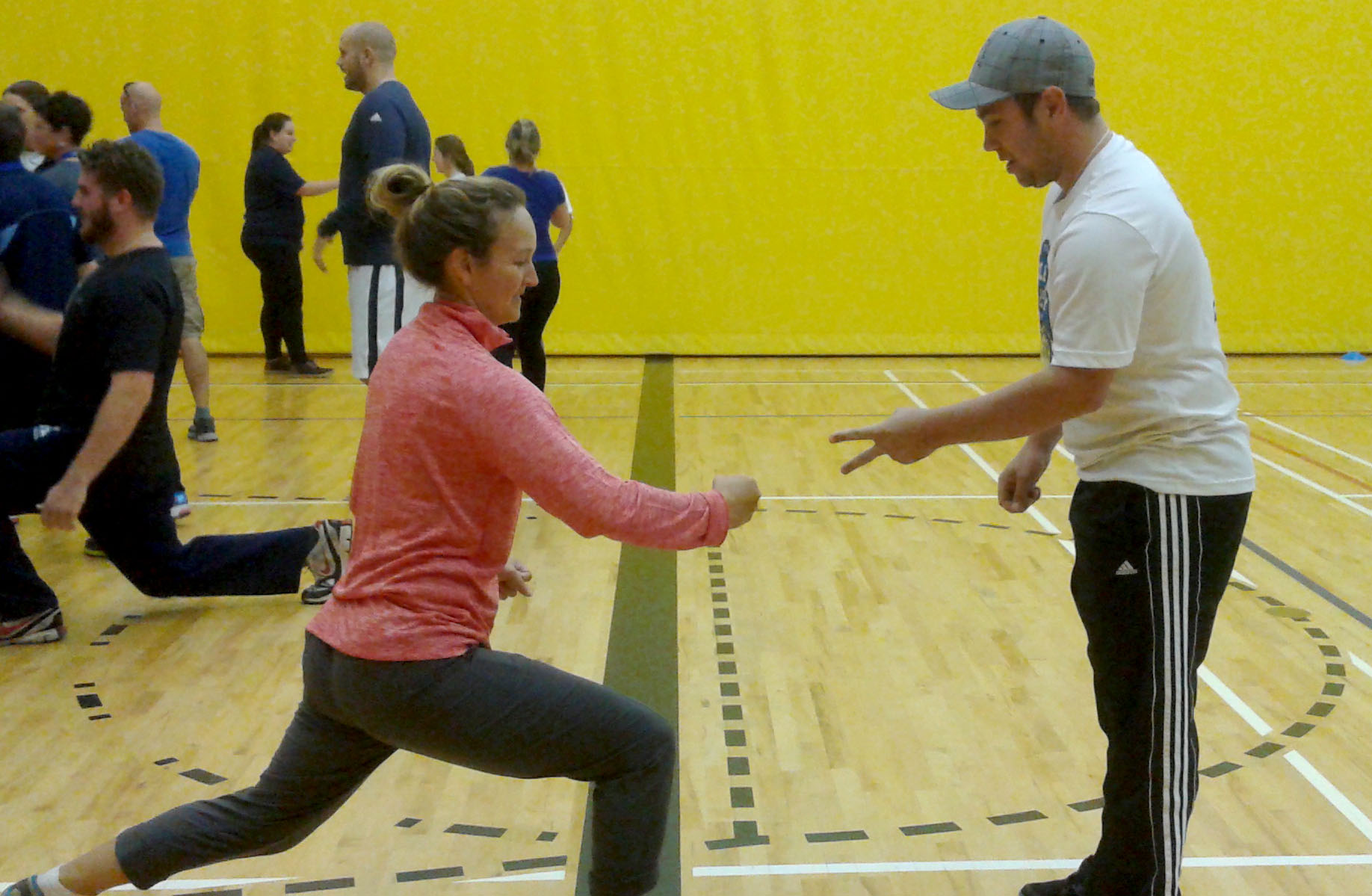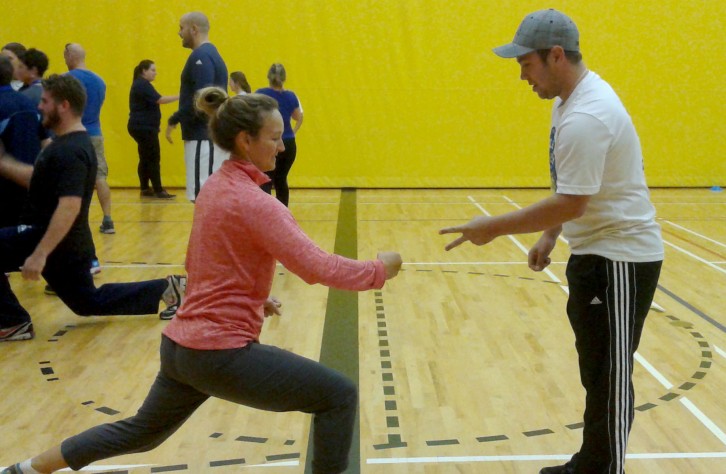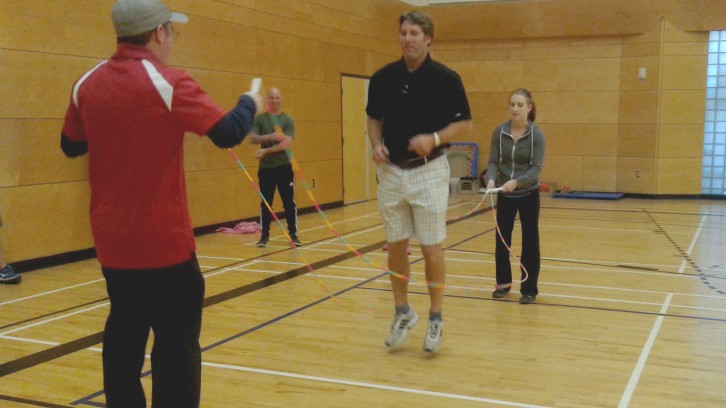Health
Teachers learn how to help get kids moving
Physical education and health teachers spent the day as students during Nova Scotia’s first Physical and Health Literacy Conference.

caption
Two teachers learn how to make rock, paper, scissors more active at Nova Scotia’s first Physical and Health Literacy Conference.
caption
Two teachers learn how to make rock, paper, scissors more active at Nova Scotia’s first Physical and Health Literacy Conference.The smack of jump ropes whacking the floor filled Citadel High School’s gym Friday.
But it wasn’t students leaping over the rubber ropes.
Physical education and health teachers from across the province spent the day as students during Nova Scotia’s first Physical and Health Literacy Conference.
The conference, a collaboration between Sport Nova Scotia and Teachers Association for Physical and Health Education, was attended by more than 350 teachers.
Teachers were taught skills to improve the physical health of their students.
Elementary school phys ed teacher and association member Susan Steele helped organize the event. She hopes teachers leave with a better understanding and commitment toward physical and health literacy.
Steele compares learning to be physically literate with learning to read.
Steele compared the building blocks of physical literacy to the building blocks of literacy. The letters form the words which form the big ideas and with that you’re literate, Steele said.
Steele said physical literacy is important because it helps kids develop skills and from that confidence.
Bringing physical literacy home

caption
Teachers learn how to get students moving with jump ropesTeachers were broken into groups and attended sessions including a lesson about getting kids active by skipping.
Eva Mulcsan, an elementary school phys ed teacher, took part in a session with CanSkip and said she learned new ways to get her students moving.
“It broke down the skills that you can apply to students when you bring it back to [school],” said Mulcsan.
A growing problem
In this year’s ParticipACTION Report Card on Physical Activity for Children and Youth, kids in Canada received a grade of D-. The report card states only nine per cent of children aged 5-17 get the recommended 60 minutes of heart-pumping activity a day.
Speaker Richard Monette, a leader of Active for Life, an organization dedicated to improving children’s physical literacy, grew up playing outside and learned from watching older kids.
Monette said this method of learning has faded away as play has gone from being outside to inside and from active to inactive.
“Kids don’t learn to move anymore, so they must be taught, they must be coached, they must be supported in learning,” said Monette.
Monette sees developing physical literacy as a key to staying healthy and happy.
“When we stop moving bad things happen. Things go wrong physically, mentally, socially. We can’t deny that fact,” Monette said to the crowd of educators.
Kids still want to play, said Monette. It’s just a new situation that he said requires a new mindset.
“Physical literacy equals active kids. If they are active that equals happier, healthier, more successful kids,” he said.
About the author

Payge Woodard
Payge is a master of journalism student at the University of King's College. She's interned for Bangor Daily News in Maine and freelanced for...
